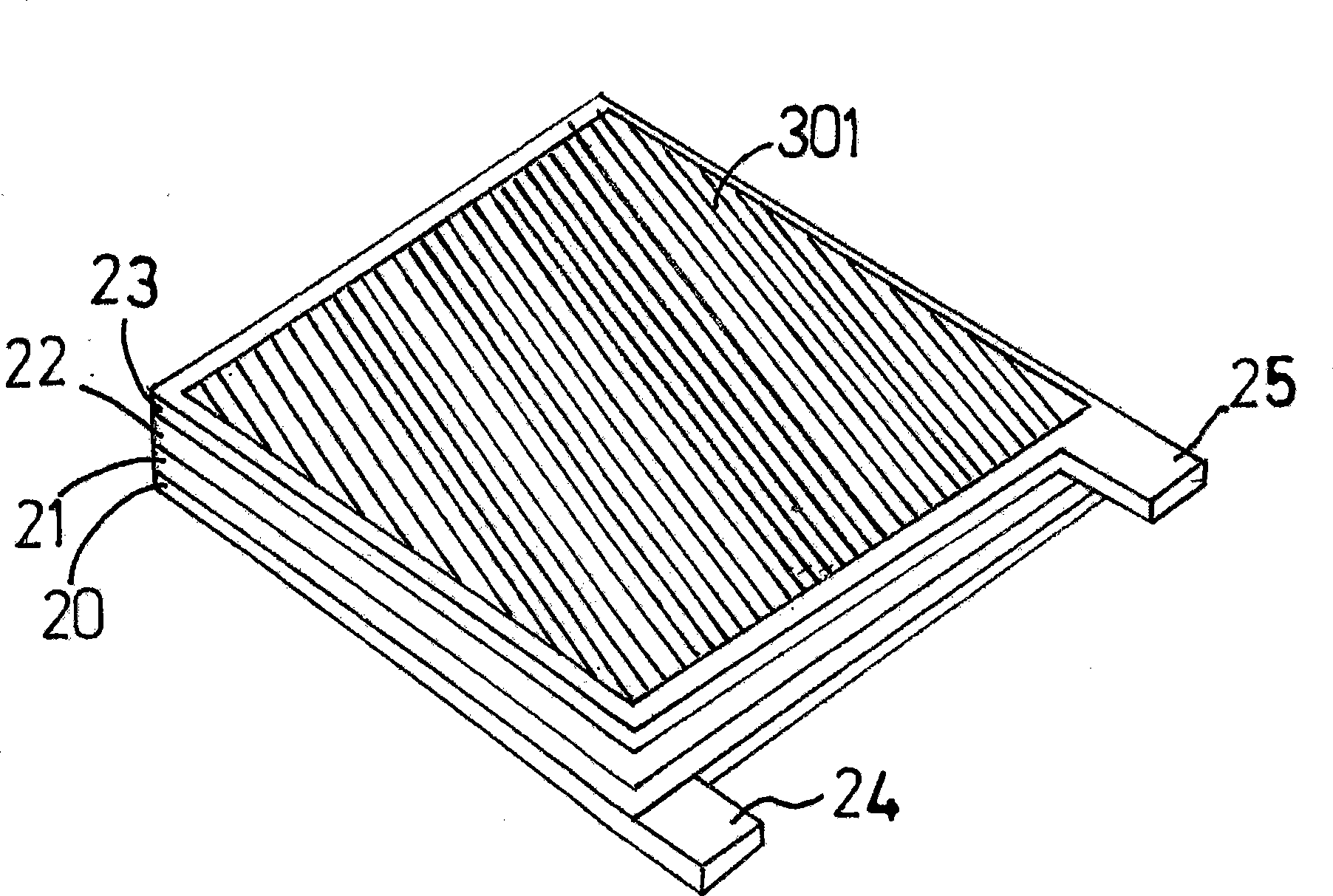Thermally enhanced solid-state generator
A solid-state energy device and battery technology, applied in the direction of electrochemical generators, capacitors, hybrid capacitors, etc., can solve the problems of no conversion efficiency, not cost-effective, and affecting environmental capital expenditures, etc.
- Summary
- Abstract
- Description
- Claims
- Application Information
AI Technical Summary
Problems solved by technology
Method used
Image
Examples
Embodiment Construction
[0079] The present invention, a new type of electrical energy generating device, is based on the purposeful layering of different materials - oxides, semiconductors, metals and carbon, so that a voltage difference appears at the interface of each material and the total voltage value is presented between the positive and negative terminals of the device. Electricity is generated from the device by developing a built-in potential across the interface between stable materials with different electronic structures and densities. Once the layers are properly aligned, the device can be treated as any electrical device and stacked in series or parallel to achieve the desired voltage output or current output.
[0080] The electrons oscillate and emit electromagnetic energy in waves. These waves have a frequency distribution based on Planck's formula. Likewise, because of the connections between atoms, the migration of one or more atoms from their equilibrium position will create a se...
PUM
| Property | Measurement | Unit |
|---|---|---|
| melting point | aaaaa | aaaaa |
| melting point | aaaaa | aaaaa |
| melting point | aaaaa | aaaaa |
Abstract
Description
Claims
Application Information
 Login to View More
Login to View More - R&D Engineer
- R&D Manager
- IP Professional
- Industry Leading Data Capabilities
- Powerful AI technology
- Patent DNA Extraction
Browse by: Latest US Patents, China's latest patents, Technical Efficacy Thesaurus, Application Domain, Technology Topic, Popular Technical Reports.
© 2024 PatSnap. All rights reserved.Legal|Privacy policy|Modern Slavery Act Transparency Statement|Sitemap|About US| Contact US: help@patsnap.com










